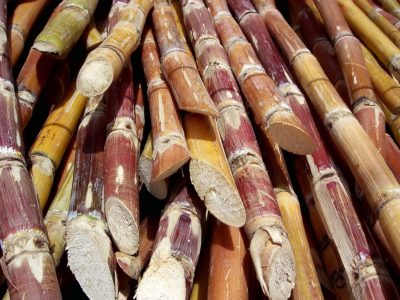How Sugar and Cane Are Processed for Use in Everyday Products
How Walking Stick Sugar Processing Chemicals Improve Sugar Top Quality and Return
The role of handling chemicals in walking stick sugar manufacturing is essential, as they directly affect both the high quality and return of the final item. The consolidation of turned on carbon and enzymes serves to maximize the malfunction of complicated sugars, inevitably leading to a purer and higher-quality sugar.
Summary of Walking Cane Sugar Processing
Walking cane sugar processing includes a series of important steps that change raw sugarcane into refined sugar items. The process begins with harvesting, where fully grown sugarcane stalks are cut and transported to processing centers. Upon arrival, the walking cane undergoes washing to get rid of pollutants such as dirt and plant materials.
Adhering to cleaning, the walking stick is squashed to extract the juice, which includes sucrose - sugar and cane. This juice undertakes clarification, where lime and warm are made use of to get rid of continuing to be impurities and non-sugar elements. The made clear juice is after that evaporated to concentrate the sugar material, bring about the formation of thick syrup
Following, the syrup is taken shape via a regulated air conditioning procedure, resulting in sugar crystals. To attain polished sugar, more filtration actions are applied, consisting of cleaning, re-crystallization, and drying out.
The end product is either packaged as raw sugar or additionally refined right into white sugar, catering to different consumer and commercial requirements. This thorough collection of actions makes certain the manufacturing of high-grade sugar, essential for countless applications in food and drink sectors.
Secret Handling Chemicals Utilized
The manufacturing of refined cane sugar counts on different processing chemicals that play substantial functions at various phases. This action is important for enhancing the general high quality of the removed juice.
Phosphoric acid offers a dual objective; it boosts the information process and assists in the removal of color-forming substances, contributing to a greater purity of the last product. Additionally, sulfur dioxide functions as a whitening agent, enabling for the effective elimination of unwanted pigments and improving the shade of the sugar.
Other notable chemicals consist of triggered carbon, which is used for additional decolorization, and enzymes that facilitate the failure of complex sugars right into simpler types, thus improving yield. The mindful choice and application of these handling chemicals are important for optimizing the effectiveness of sugar removal and refining processes, eventually bring about a more consistent and greater high quality sugar product.

Impact on Sugar Top Quality
Just how do handling chemicals affect the high quality of refined sugar? The introduction of various chemicals in the cane sugar handling stage dramatically boosts the pureness and total high quality of the final product.
Furthermore, using turned on carbon and ion-exchange materials during the refining process plays an important function in eliminating off-flavors and unwanted smells, contributing to the sugar's sensory profile. This improvement not just elevates the visual and organoleptic high qualities but also boosts the shelf life by reducing microbial activity linked with contaminations.
In addition, the precise application of these chemicals ensures that the sugar shows a constant grain size and flowability, which are crucial qualities for both industrial applications and customer preferences. On the whole, the calculated use processing chemicals is basic in achieving top quality polished sugar that satisfies sector requirements and customer expectations.

Enhancing Return Efficiency
Enhancing yield effectiveness in walking cane sugar handling includes maximizing various stages of production to make best use of the amount of sugar extracted from raw cane. One vital facet is the option and application of ideal processing chemicals, which can help with the malfunction of cell wall surfaces and boost link sugar launch throughout removal. Chemicals such as acids and enzymes play an essential duty in this procedure by hydrolyzing polysaccharides and liquifying get more contaminations, thereby improving the overall extraction efficiency.

Normal monitoring and modification of handling specifications are vital to preserve efficiency throughout production (sugar and cane). By using these techniques, sugar manufacturers can not only boost the amount of sugar obtained yet also decrease waste and reduced production expenses, adding to an extra sustainable and successful sugar handling operation
Advantages for Consumers and producers
Walking stick sugar processing chemicals use substantial benefits for both manufacturers and customers, developing an extra lasting and reliable sector. For manufacturers, these chemicals boost extraction processes, causing greater yields and enhanced sugar high quality. By enhancing the purification and condensation stages, they decrease waste and increase overall productivity, which can significantly reduce manufacturing expenses. This effectiveness allows producers to remain affordable in an international market identified by changing costs and demand.
For consumers, the advantages are just as compelling. The improved top quality of sugar translates to much better taste and uniformity in food items. Furthermore, making use of processing chemicals can result in a much more steady supply of sugar, minimizing shortages and cost spikes that can occur because of environmental aspects or market changes. The improvements in production techniques add to sustainability efforts by minimizing resource usage and waste generation, appealing to environmentally aware consumers.
Final Thought

The function of handling chemicals in walking stick sugar production is crucial, as they directly affect both the high quality and yield of the last item (sugar and cane). The consolidation of turned on carbon and enzymes serves to optimize the malfunction of complex sugars, inevitably leading to a purer and higher-quality sugar.Walking stick sugar processing includes a series of important steps that change raw sugarcane into polished sugar products.Enhancing return performance in walking cane sugar processing includes enhancing different stages of manufacturing to make the most of the amount of sugar removed from raw cane.Cane sugar processing chemicals play an important role in improving both sugar top quality and yield